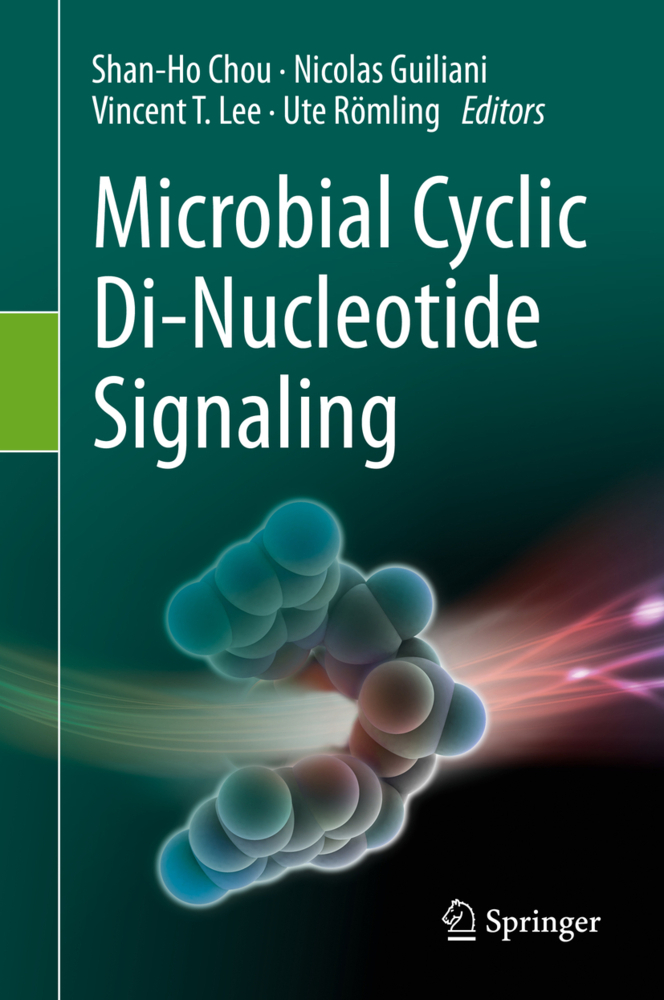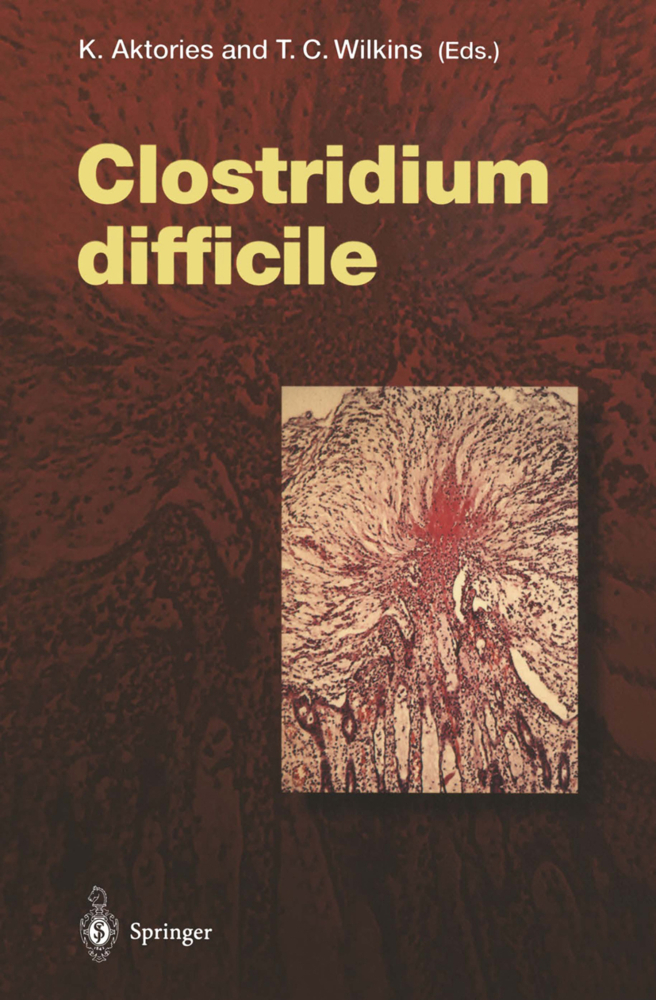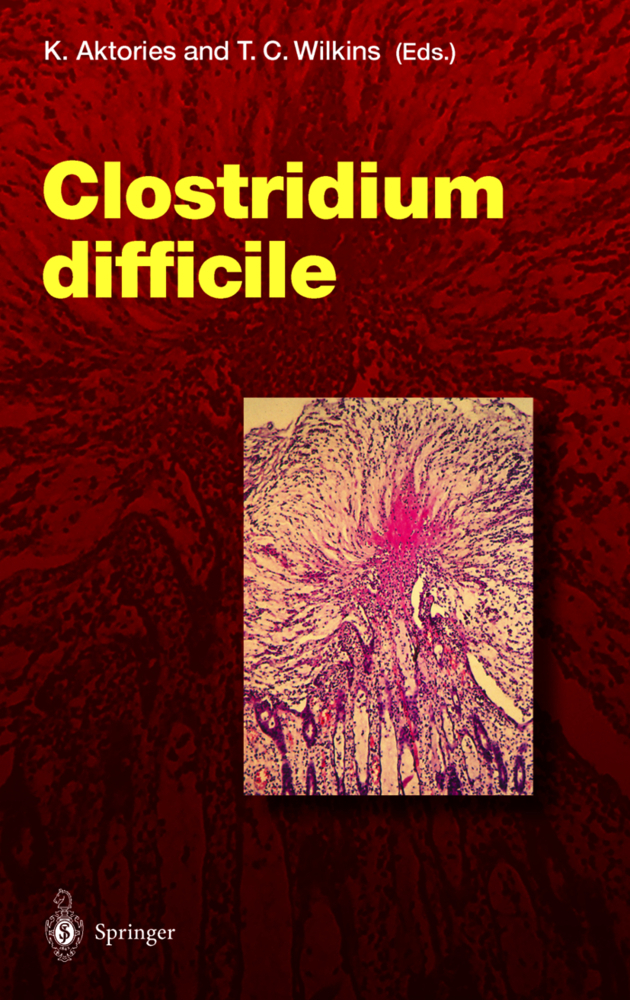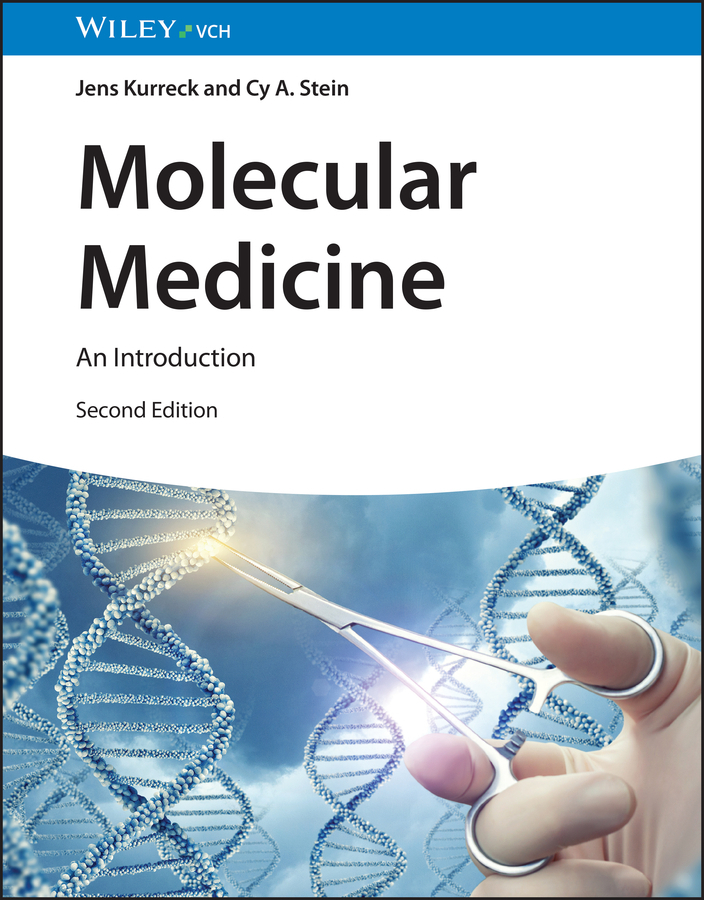Microbial Cyclic Di-Nucleotide Signaling
Microbial Cyclic Di-Nucleotide Signaling
This book explores the broad and diverse biological and physiological impacts of established and newly discovered cyclic di-nucleotide second messenger signaling systems, while also providing descriptions of the intriguing biochemical characteristics of multiple turnover enzymes and receptors. The respective chapters discuss the commonalities and diversity of cyclic di-GMP, cyclic di-AMP and recently discovered cyclic GMP-AMP signaling systems in manifold Gram-negative and Gram-positive bacteria. The global human pathogens Mycobacterium tuberculosis, Vibrio cholerae, Salmonella typhimurium, Escherichia coli and Streptococcus pneumoniae, the facultative human pathogen Pseudomonas aeruginosa, global plant pathogens as exemplified by Xanthomonas campestris and Burkholderia spp., and the omnipresent probiotic Lactobacilli, as well as environmentally importantphotoautotrophic cyanobacteria, the multicellular Myxococcus xanthus, and chemolithotrophic Acidithiobacillus are among the representatives of the microbial kingdom that are described.
In turn, the various aspects of bacterial physiology affected by these signaling systems- e.g. biofilm formation and dispersal, the cell cycle, motility, virulence, production of antimicrobials, fundamental metabolism and osmohomeostasis - are discussed in detail in the context of different microorganisms. Dedicated chapters focus on the population diversity of cyclic dinucleotide signaling systems, their tendency to be horizontally transferred, the cyclic di-GMP signaling system in the social amoeba Dictyostelium, honorary cyclic (di)nucleotides, and the development of strategies for interfering with cyclic dinucleotide signaling in order to manipulate microbial behavior.
Taken together, the chapters provide an authoritative source of information fora broad readership: beginners and advanced researchers from various disciplines; individuals seeking a broad overview of cyclic di-nucleotide signaling; and those who want to learn more about specific aspects. Also featuring reviews with a forward-looking perspective, the book offers a valuable source of inspiration for future research directions.
Part I:Biochemistry/Structural Biology - Enzymes
Chapter 1: Cyclic Dinucleotide Signaling In Mycobacteria
Chapter 2: Structure and regulation of EAL domain proteins
Chapter 3: Insights into the molecular basis of biofilm dispersal from crystal structures of di-domain containing proteins
Chapter 4: Structure and function of HD-GYP phosphodiesterases
Chapter 5: A unified catalytic mechanism for c-di-NMP hydrolysis by DHH/DHHA1 phosphodiesterases
Chapter 6: Enzymatic degradation of linear dinucleotide intermediates of cyclic dinucleotides
Part II:Biochemistry/Structural Biology - Receptors
Chapter 7: Detection of cyclic dinucleotide binding proteins
Chapter 8: Non-canonical c-di-GMP binding modes
Part III:Biochemistry/Structural Biology - Sensing
Chapter 9: Sensory domains that control cyclic di-GMP-modulating proteins: a critical frontier in bacterial signal transduction
Part IV:Cyclic di-AMP biochemistry and physiology
Chapter 10: Metabolic regulationby cyclic di-AMP signaling
Chapter 11: Osmoregulation via cyclic-di-AMP signaling
Part V:Population diversity
Chapter 12: Measuring individual cell c-di-GMP: Identifying population diversity and c-di-GMP heterogeneity.-Part VI:Cyclic di-GMP and exopolysaccharide regulation
Chapter 13: Activation of bacterial cellulose biosynthesis by cyclic-di-GMP
Chapter 14: The Regulation of Alginate Biosynthesis viaC-di-GMPSignaling
Part VII:Environmental bacteria
Chapter 15: Cyclic di-GMP Signaling in Bacillus subtilis
Chapter 16: C-di-GMP signaling systems in the Gram-positive Bacillus cereus group
Chapter 17: Cyclic-di-AMP in Bacillus subtilisbiofilm formation.-Chapter 18: Regulation by c-di-GMP in Myxococcusxanthus
Chapter 19: Light-regulated nucleotidesecond messenger signalingin cyanobacteria
Chapter 20: C-di-GMP-dependent regulation of antibiotic biosynthesis in Lysobacter
Chapter 21: Cyclic di-GMP signalingin extreme acidophilic bacteria
Part VIII:Pathogens
Chapter 22: Signals modulating cyclic di-GMP pathways in Vibrio cholera
Chapter 23: Cyclic di-GMP regulation of gene expression
Chapter 24: Cyclic di-GMP signaling in Salmonella enterica serovar Typhimurium
Chapter 25: Cyclic di-GMP signaling in the phytopathogen Xanthomonas campestris pv. Campestris
Chapter 26: Cyclic di-AMP in Mycobacterium tuberculosis
Chapter 27: Cyclic di-AMP signaling in Streptococcus pneumonia
Part IX:Gram-negative bacteria
Chapter 28: Regulation of cyclic-di-GMP signaling in Pseudomonas aeruginosa
Chapter 29: Unconventional Cyclic di-GMPSignalling in Escherichia coli
Chapter 30: Cyclic di-GMP in Burkholderia spp
Chapter 31: Cyclic di-GMP and the regulation of biofilm dispersion
Part X:Cyclic di-GMP signaling in eukaryotes
Chapter 32: Cyclic-di-GMP activates adenylate cyclase A and protein kinase A to induce stalk formationin Dictyostelium
Part XI:Interference Strategies
Chapter 33: Targeting cyclic di-nucleotide signaling with small molecules
Part XII:Novel cyclic di-nucleotides
Chapter 34: Cyclic di-GMP signaling gone astray: cGAMP signaling via Hypr GGDEF and HD-GYP enzymes
Chapter 35: Microbial cyclic GMP-AMP signaling pathways.-Part XIII:Honorary cyclic nucleotides
Chapter 36: 2',3'-cyclic mononucleotide metabolism and possible roles in bacterial physiology
Part XIV:Horizontal gene transfer
Chapter 37: Horizontal transfer of c-di-GMP associated genes. Theoretical underpinnings and future perspectives.-Part XV:Conclusion
Chapter 38: Conclusion.
Chou, Shan-Ho
Guiliani, Nicolas
Lee, Vincent T.
Römling, Ute
| ISBN | 978-3-030-33310-2 |
|---|---|
| Artikelnummer | 9783030333102 |
| Medientyp | Buch |
| Copyrightjahr | 2021 |
| Verlag | Springer, Berlin |
| Umfang | XVIII, 657 Seiten |
| Abbildungen | XVIII, 657 p. 108 illus., 96 illus. in color. |
| Sprache | Englisch |











